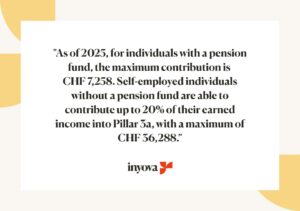The second quarter of 2025 delivered a potent mix of investor optimism and looming macro risks. Equity markets, led by the US, rebounded sharply from an early correction despite persistent concerns over geopolitics, tariffs, sovereign debt, and deteriorating economic fundamentals. Retail enthusiasm fueled the rally, while institutional investors remained hesitant, signaling an uneasy disconnect. With inflationary pressures mounting, earnings expectations cooling, and central banks recalibrating their stance, investors are left navigating a landscape where momentum runs high — but stability remains elusive. Swissquote’s Ipek Ozkardeskaya and NFG Partner’s Glenn Coxon discuss the latest market trends and Q3 expectations.
The Q2 of 2025 was marked by a very — probably too — rapid pricing out of trade and geopolitical risks, US debt worries, and unideal growth and inflation projections, especially for the US. Major US indices rebounded after a 20% selloff to reach fresh all-time highs, ignoring that these risks are still looming.
- Trade negotiations so far have resulted in relatively high tariff rates for US’ major trade partners (25–40%).
- Donald Trump’s signature Big, Beautiful Tax bill was approved and is expected to add $3.3 trillion to the existing debt.
- The situations in the Middle East and Ukraine remain tense.
- US growth projections have been downgraded, while long-term inflation expectations rose to multi-decade highs.
Meanwhile, S&P 500 earnings expectations for Q2 melted from 9.6% at the end of March to the 5–7% range — raising concerns that the latest rally may not be sitting on solid ground.
In fact, the post-April 2nd rally was mainly shouldered by retail investors’ endeavor to buy the dip (TACO — Trump Always Chickens Out), while positioning in CFTC data suggested that institutional investors remained on the sidelines, watching markets rave from the benches.
Glenn Coxon at NFG Partners explains that they made only small adjustments to their portfolio allocations during Q2, continuing to anchor around low-volatility equities — such as Colgate Palmolive, P&G, Coca-Cola, and Berkshire Hathaway — alongside Continental European equities, inflation-protected bonds, and gold. While new uncertainties are emerging, market momentum and liquidity remain supportive, he says, though he maintains a slightly cautious stance on equities (just below neutral).
The gap between retail and institutional appetite suggests that, if risks materialize, the market could experience a sizeable correction. That could be the moment when short positions in US equities are readjusted — potentially leading to a rebound with stronger legs.
But first, investors — and policymakers — must see the concrete impact of tariffs on global trade, supply chains, earnings, growth, and prices.
While opinions diverge on how company earnings will tolerate tariffs, US trade and fiscal policies are increasingly building the case for a higher-inflation environment in the medium to long run.
As such, the Federal Reserve (Fed) will hardly cut interest rates before fall. However, the Fed remains the most reliable safety net for markets, as it will inevitably buy US sovereign debt and ensure that sentiment in US bond markets remains as soothing and strong as possible.
That said, with global investors now questioning the US debt trajectory — pointing to its unsustainably rising trend — appetite for sovereign bonds excluding US Treasuries is rising, with Germany standing out as a strong medium-term alternative.
The US dollar index fell nearly 12% in the first half of 2025 — even though real yields remained relatively elevated and stable.
The greenback’s weakness despite relatively high real yields suggests an EM-like behaviour, according to Coxon.
However, net short bearish positions against the dollar may now have gone far enough to give the greenback some short-term relief in the summer months.
In the longer run, the dollar’s global reserve currency status is under pressure — but we’re far from replacing the US dollar with alternatives. The euro, a gold-backed BRICS currency, or the yuan are possible contenders, but emerging economies’ rising appetite for cryptocurrencies and stablecoins may ironically lend fresh support to the US dollar — and set a floor under its weakness.
The most popzular stable coins USDT and USDC together hold only ~$140 billion in assets — equal to just 6–7% of all US Treasuries maturing in under a year, Coxon warns. Hence, any loss of appetite for US debt will be only partially offset by crypto demand.
When volatility is inevitable, the best strategy is still: diversify.
European equity markets — especially defense and military sectors — have attracted massive inflows since the start of the year, thanks to an initial valuation gap between US and European equities. Appetite was further strengthened by rising government spending from European states, led by Germany.
Preference for European stocks continues, as the low-inflation environment and supportive ECB policy could stimulate growth and eventually offset demographic and regulatory headwinds. Still, European stocks offer smaller margins than their high-potential, tech-crowded US peers.
Nonetheless, Coxon notes that Nasdaq stocks remain highly valued, and European markets and the S&P Low Volatility stocks could offer a smoother ride through uncertainty.
Go EM💪
Global trade tensions have certainly weighed on growth expectations, yet the weaker US dollar has been a boon for EM markets — lowering energy and raw material costs and easing the burden of their USD-denominated debt.
The MSCI EM is a simple but effective way to diversify away from US markets. Still, Coxon prefers the ‘ex-China’ version, citing China’s ongoing demographic and housing risks, regime unpredictability, and trade uncertainty.



